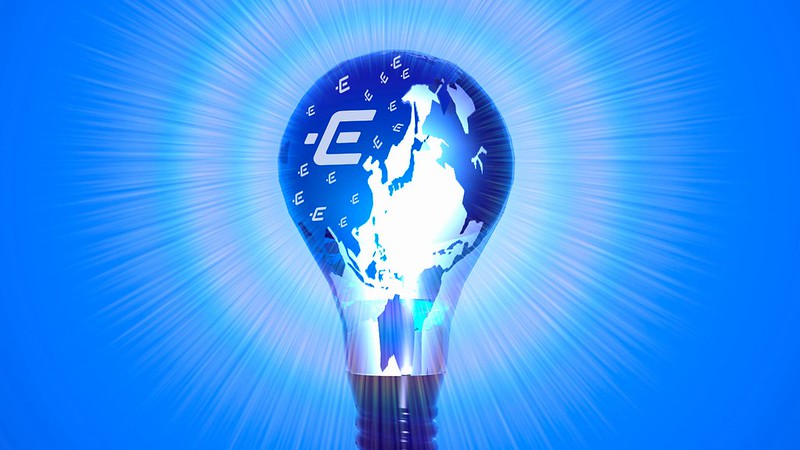Stablecoins get very little attention compared to the rest of cryptocurrency. There is probably a valid reason for this since, by design, they are boring. If operating properly, there really isn't that much to see.
Prices should not have a lot of movement, a reason to omit it from the headlines.
However, these are powerful products with the potential to have a great deal of utility. In fact, the long term success is going to depend upon the use cases that are created.
In this article we will look at the future of stablecoins and the importance they have.

Image by EURST
Bridge Between Two Worlds
Many are quick to dismiss stablecoins as something that is not required. This is true for many within cryptocurrency along with regulators. A lot of people prefer they would just go away.
This is a mistaken view. We can already see how these enhance the entire ecosystem while bringing more options to people.
It is a fact that was not missed by the former chairman of the United States Commodity Futures Trading Commission (CFTC) Timothy Massad. He has long viewed this as an important component to the financial system.
This is what took place in an interview with CNBC:
On July 24, Massad told the CNBC interviewer that he sees stablecoins as a bridge between “the crypto world and the real world,” and that governments should not view them as a fad fated to disappear.
Anyone who is around Hive and the discussions regarding some of the geographic developments realizes this is the case.
Massad went on to state:
“I’m sympathetic to a lot of people in the government saying [...] we’re not convinced of the use case here; we don’t really see what the value is in the real world,” he said, adding, “but sometimes it takes time to really discover that.”
Obviously there has to be something joining the two systems since overnight replacement is not happening.
Sucre, Venezuela
We often point to the region of Sucre in Venezuela as a prime example of the power of stablecoins.
That area has embraced with use of the Hive Backed Dollar (HBD), a stablecoin on Hive that is denominated in USD. Unlike many other coins such as Tether or USDC, this is not backed by US Treasuries. Instead, it is the other base layer coin that is the backing agent. Thus, anyone can convert HBD to $1 worth of $HIVE.
A number of businesses are accepting HBD as payment. This is a big step forward as people are making payment on real world goods and services. It is an alternative to the bolivar.
Why would they embrace a currency like this?
Here are a few benefits:
- exists in digital form unlike the US dollar where they would have to deal in banknotes
- can be acquired through on chain activity and rewards
- no transaction fees
- no merchant fees
- instant settlement
- no interaction or engagement with banks
It is a truly private currency outside the scope of governments or central banks.
As more HBD is pumped into the region, the local economy benefits. This also brings more value to HBD since a currency is ultimately backed by the economic activity tied to it.
Within Sucre, as more people engage with commercial transactions utilizing the currency, business benefits. Since these are family run or individually owned, we can see how this directly impacts the people involved.
CBDCs But Not Stablecoins?
There is a lot of talk about Central Bank Digital Currencies (CBDCs). Advocates put forth a number of reasons as to why it is of benefit and countries should take that step.
Isn't it interesting that all these reasons apply to stablecoins? Of course, the conversation is not really about financial benefits as much as control. Government bureaucrats and politicians are 100% able the power they wield. This is ultimately what it comes down to.
Each time you read about the benefits of a CBDC, flip that to a stablecoin. When looking at the market that already exists, the next question is who cannot be controlled?
Circle, the company behind USDC, already filed for a banking license in the United States. Many bills that were proposed in Congress have stablecoins issuers being treated like banks.
Nevertheless, that is not important to people in a region like Sucre. They could care less about what the United States Congress does. In fact, the only impact it could have is negative. Politicians tend to not make much better as a rule.
Fortunately, HBD is outside their reach. This is tied to a blockchain that is not solely resident in the U.S. The lack of a centralized laboratory or company is also playing into this. Without an entity to regulate, how can regulation apply?
That is the dilemma they face. It is also why one of the latest proposals is to hold the developer responsible. That is one of the most asinine thoughts they came up with.
Monetary history is fully against the regulators, politicians, an governments on this one. Money has been, for the most part, in the hands of the private sector. The reason it exists is to facilitate trade. By definition, money is for commercial (and financial) purposes.
People are going to utilize what works best for them. Why are people in Sucre turning to HBD over the bolivar? Simply put, there advantages to the individuals and businesses in doing so.
The idea is to keep expanding the utility and building out the ecosystem. When this is done, the advantages keep growing.
Here is where the dilemma of currency enters. Governments can issue an edict yet business people are still going to operate in their own best interest.

logo by @st8z
Posted Using LeoFinance Alpha

